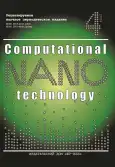Application of numerical methods for optimizing visual elements in e-commerce
- Авторлар: Chmelev A.A.1, Grineva N.V.2
-
Мекемелер:
- Wildberries LLC
- Financial University under the Government of the Russian Federation
- Шығарылым: Том 11, № 4 (2024)
- Беттер: 11-18
- Бөлім: ARTIFICIAL INTELLIGENCE AND MACHINE LEARNING
- URL: https://journal-vniispk.ru/2313-223X/article/view/282557
- DOI: https://doi.org/10.33693/2313-223X-2024-11-4-11-18
- EDN: https://elibrary.ru/FRPRGW
- ID: 282557
Дәйексөз келтіру
Аннотация
The article discusses the use of numerical methods to optimize the design elements of product cards. The discount block, one of the key elements significantly influencing sales, is selected as the object of study. The aim of the research is to improve the click-through rate (CTR) of product cards by analyzing and optimizing visual parameters such as color, font size, block placement, discount format, and device type. To achieve this goal, a regression model was developed to predict CTR for new parameter combinations without the need for full-cycle testing and to evaluate the significance of the analyzed parameters. The results show that the most impactful factors on CTR are background color, font size, and the placement of the discount block. The proposed approach reduces the number of required tests, accelerates the optimization process, and can be adapted to other design elements, such as call-to-action buttons or stock availability indicators.
Толық мәтін
##article.viewOnOriginalSite##Авторлар туралы
Andrei Chmelev
Wildberries LLC
Хат алмасуға жауапты Автор.
Email: an.chmelev@gmail.com
senior full stack engineer, technical lead, specialist in applied mathematics and computer science, mathematician, system programmer
Ресей, MoscowNatalia Grineva
Financial University under the Government of the Russian Federation
Email: ngrineva@fa.ru
ORCID iD: 0000-0001-7647-5967
Cand. Sci. (Econ.), associate professor, Department of Information Technology
Ресей, MoscowӘдебиет тізімі
- Ku E., Lau T. The impact of discounts on consumer behavior: A comprehensive review. Journal of Retailing and Consumer Services. 2015.
- Lee J., Chen C. The role of visual parameters in marketing: A regression analysis approach. Journal of Marketing Research. 2020.
- Box G.E.P., Hunter W.G., Hunter J.S. Statistics for experimenters: Design, innovation, and discovery. John Wiley & Sons, 1978.
- Montgomery D.C. Design and analysis of experiments. 9th ed. Wiley, 2017.
- Bishop C.M. Pattern recognition and machine learning. Springer, 2006.
- Hastie T., Tibshirani, R., Friedman J. The elements of statistical learning: Data mining, inference, and prediction. Springer, 2009.
- Goodfellow I., Bengio Y., Courville A. Deep learning. MIT Press. 2016.
- Pedregosa F., Varoquaux G., Gramfort A. et al. Scikit-learn: Machine learning in Python. Journal of Machine Learning Research. 2011. No. 12. Pp. 2825–2830.
- Handbook on D-optimal design. National Institute of Standards and Technology (NIST), 2017. URL:
- McKinney W. Python for data analysis: Data wrangling with Pandas, NumPy, and IPython. O’Reilly Media, 2017.
Қосымша файлдар












